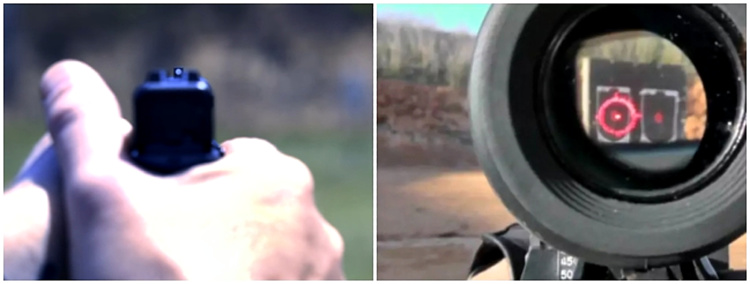Is Your Gun Talking to You?

Ever take the time to listen to your gun? I don’t mean the loud “bang” that we protect our ears from. I mean paying attention to its operation. Similar to how your car will often tell you how it’s running, or what might be wrong with it, your gun will do the same.
I’d never really thought of it like that, but Daniel Shaw of Gun Mag Warehouse makes a good case for tweaking your thinking toward your firearm in this video.
When is it ready to fire?
Daniel gives us the example of how some shooters, especially when trying to fire quickly, fail to let the gun tell them when it’s ready to fire the next round. What he means by that is allowing the front sight or the dot to get back on target before pressing the trigger again.
It seems simple, but I can remember doing just what he talked about when I first started shooting. The first shot was carefully aimed but the follow-up shots were often sent in the general direction of the first. Only later, after taking some courses, did I learn that particular skill, and, trust me, it takes practice to acquire and maintain. But making a conscious effort to do small things like that can make you a better shooter even without an instructor looking over your shoulder. I think Daniel makes a good point about seeing it as the gun telling you it’s ready. Just a simple adjustment to your thinking.

This frame of mind can help you identify techniques that need work, such as tracking your sights better or improving your grip to manage recoil. These things help your gun get ready faster. The faster your gun gets ready, the more effective you will be.
When is it not ready to fire?
Stoppages are another way your gun communicates with you. It will dang sure tell you when it’s not ready to fire, whether it be the dreaded “click,” which I reference in an article of the same name, or a stovepiped round sticking out of the ejection port.

wrong.
In both of those cases and others, your gun is giving you clues about what is wrong with it. Maybe you’re a slob and just haven’t cleaned it since the last time you did, which you can’t really remember. Happens to all of us. Or most of us. Or some of us. I can’t really be the only one here, can I? Learn to read those clues and you will know what to do to fix it and get back to shooting. And if you carry a gun, reading those clues and taking the correct action may save your life someday.

long as you’re properly tuned to its operation.
It’s a mindset thing and it will take a little time and practice.
Just like it takes time behind the wheel to learn what your car is supposed to feel like, the same applies to your gun. Everyone knows that if the gun fails to go “bang” when you press the trigger something is wrong, but can you quickly identify what that wrong thing is? Your gun will let you know if you’ve taken the time to get to know it.

So, as always, you gotta practice. I’m heading that way myself, since typing this has reminded me that it’s been a week or so. See ya on the range.


